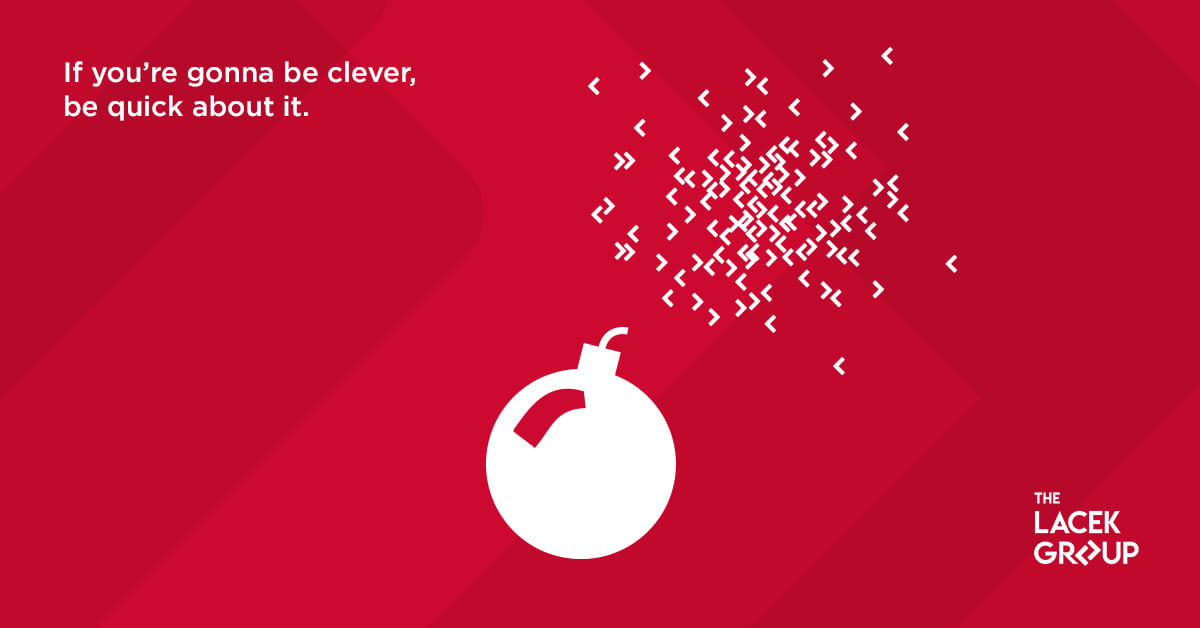Generating Creative with AI

Would you turn over your client’s brand creative to artificial intelligence, start to finish? For most marketing agencies, the answer to that question is an unequivocal no. At least for now.
In the dynamic landscape of consumer communications and advertising, AI’s allure as a creative powerhouse is undeniable, promising efficiency and innovation at unparalleled speeds. But while AI possesses remarkable capabilities in data analysis and pattern recognition, it falls far short in providing the human sentiment and intuition essential for crafting authentic brand creative. The soul of a brand, after all, lies in its ability to resonate with audiences, evoke emotions, and forge connections. And AI can leave consumers cold.
In fact, according to a recent article in Ad Age, many clients actually restrict how far their ad agencies can take AI creative. Yet that hasn’t stopped many firms from trying out ChatGPT, Meta AI, Chatsonic, Microsoft Copilot, Jasper, or other AI chatbots. One New Zealand agency even won an award for an AI-assisted ad campaign, “Adoptable,” for Pedigree.
Oops: Generative AI can go awry
While AI is capturing an impressive slice of the zeitgeist, we’ve all likely heard funny, head-scratching, or cautionary tales about using generative AI.
Not long ago, for example, we chatted with a copywriter whose longtime client had turned to ChatGPT in her stead. A quick and easy option to craft copy, right? But then it churned out oddly worded and less-than-appetizing restaurant copy that included a beverage list featuring “zesty lemonade” and “golden beer.” (No, thank you.) The AI copy quickly convinced the client that the project needed a professional writer after all.
A web design firm relied on AI to create bios for a client’s staff members. Not until the website had gone live did the team realize the bios were both pure fiction and embarrassing. Imagine your bio, placed on your company’s website, featuring utterly imaginary credentials plus silly hobbies and interests. Yikes. Perhaps this situation was more the fault of the design firm than the AI chatbot it relied on—but it does illustrate the continued need for humans, not just to monitor tone but also to fact-check.
Hmm—AI may be creatively useful
Successful brand creative responds to myriad factors: the audience, the pitch, the language, the imagery, and much more. AI can help teams avoid the anxiety of the blank page by jump-starting idea generation and concepting. But a truly compelling brand narrative requires human creativity, empathy, and ingenuity—all of which contribute to creating and consistently implementing brand voice.
Let’s explore five upsides and five downsides to AI-generated creative. Full disclosure: To really live in the vein of our topic, we collaborated with ChatGPT to create this list—and the bot was just as quick to offer up its downsides as its upsides.
👍 Generating ideas: ChatGPT can propagate ideas and concepts quickly, allowing for rapid ideation and experimentation in the creative process. This speed can be invaluable in meeting tight deadlines and responding promptly to consumer feedback.
👎 Conveying emotion: Grasping human emotion is outside an AI chatbot’s wheelhouse—at least at present. Sure, it understands language and can crank out text, but brand creative often hinges on evoking a specific emotional response from various audiences. That requires a nuanced understanding of psychology, empathy, cultural context, and emotional intelligence—areas where AI falls short.
👍 Providing insights: An AI chatbot can analyze vast amounts of data to uncover valuable insights into consumer behaviors, preferences, and market trends. Leveraging those data-fueled insights can help brands refine their creative strategies, optimize messaging, and tailor content to better resonate with their target audiences.
👍 Boosting creativity: Although an AI chatbot may lack human intuition and emotional understanding, it can inspire creative thinking by generating unexpected ideas, perspectives, and associations. When used alongside human creators, an AI chatbot can be a catalyst for innovation.
👎 Delivering originality: While AI doesn’t exactly plagiarize, it does base its answers on the copy it was fed for training, and that means its overall creativity is limited. Sure, it can deliver well thought-out answers to questions, but its copy will rarely offer something truly new, fresh, or unconventional. For that, you must still rely on a human.
👍 Offering personalization: With its ability to process large volumes of data, an AI chatbot can quickly tailor brand creative to specific audience segments, demographics, and even individual preferences. This level of personalization can enhance engagement and help foster strong connections between a brand and its consumers.
👍 Staying on budget: AI-generated content can be scaled to meet the demands of various marketing channels without significant additional costs. This scalability enables a brand to quickly appear across multiple platforms while optimizing resources.
👎 Maintaining voice: Here’s a big but: AI-generated content can lack consistency in tone, style, and messaging, especially when producing content across multiple campaigns. Relying solely on AI makes it nearly impossible to deliver a cohesive brand voice and image—which can quickly dilute and confuse a brand’s identity.
👎 Upholding ethics: As AI continues to evolve, concerns regarding ethical use, biases in data, and potential misuse of AI-generated content become increasingly relevant. Brand creative assembled by AI alone raises questions about authenticity, transparency, and the role of human creativity and judgment in shaping brand narratives.
👎 Capturing a brand: Developing a brand’s creative involves conveying its unique essence, personality, and values—a task that requires messaging nuance, a factor of human insights and understanding. Can AI truly understand your brand, your customers, your goals, or your loyalty program? An AI chatbot, despite its linguistic capabilities, lacks the capacity to grasp the intricacies of communication, making it nearly impossible for AI to create authentic brand messaging.
Don’t trust, and definitely verify
Putting together brand communications requires a blend of craft, experience, and creativity. As of now, generative AI can’t boast those traits. But it can offer a number of potential timesavers—and even unexpected inspirations. Today’s generative AI is an available tool rather than a replacement for skilled humans. If you plan to dip a toe into the AI pool, be sure to backstop artificial intelligence with the talented people on your team.
Karin B. Miller and Wendy Weckwerth write and copyedit for The Lacek Group, a Minneapolis-based agency that’s been perfecting the art and algorithms of brand devotion for more than 30 years. We help world-class brands identify their highest-potential customers, engage them across channels throughout their lifecycles, personalize each relationship for optimal long-term results, and measure the true effectiveness of those efforts. The Lacek Group is an Ogilvy company.

